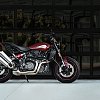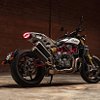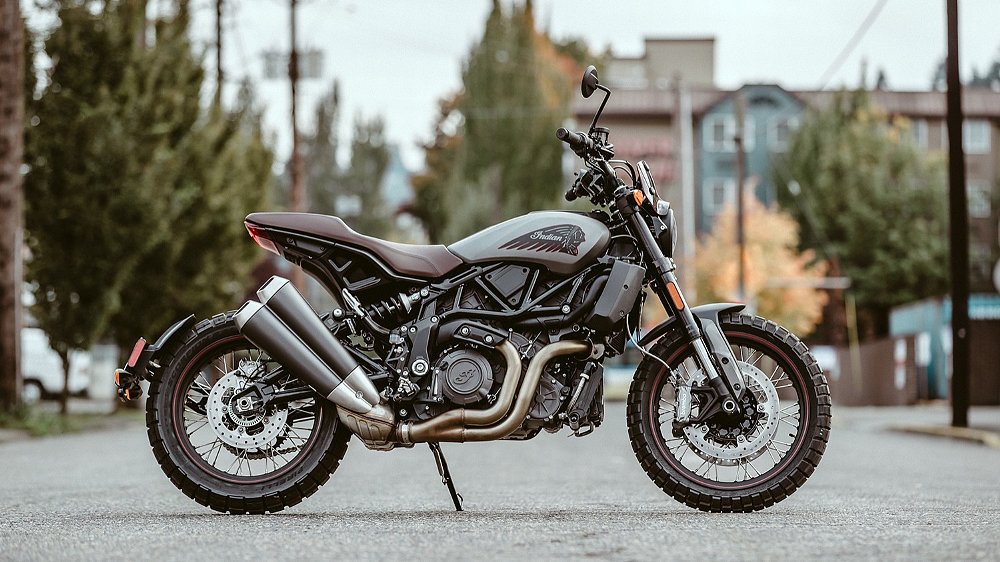You might say Indian has taken a right turn with its FTR lineup: That is, away from its left-turning flat-track roots to make the street bike more street-oriented.
Indian has introduced four versions of what it calls the 2022 FTR, though it will be available in dealerships this spring. Three of those four models will roll on 17-inch sport tires, with a lower seat and handlebar, nudging them firmly into the performance standard territory that some call sport nakeds. The fourth model will continue to be the FTR Rally, rolling on 18-inch rear and 19-inch front tires that allude to the Indian FTR750 race bike that has dominated the American Flat Track series the last few years. Some might not agree with this comparison, but it almost feels to me that at the same time Harley-Davidson has put on hold its plans to build the Bronx streetfighter, Indian has gone ahead and made three of them.
So let's take a look at the three new versions of the FTR 1200.
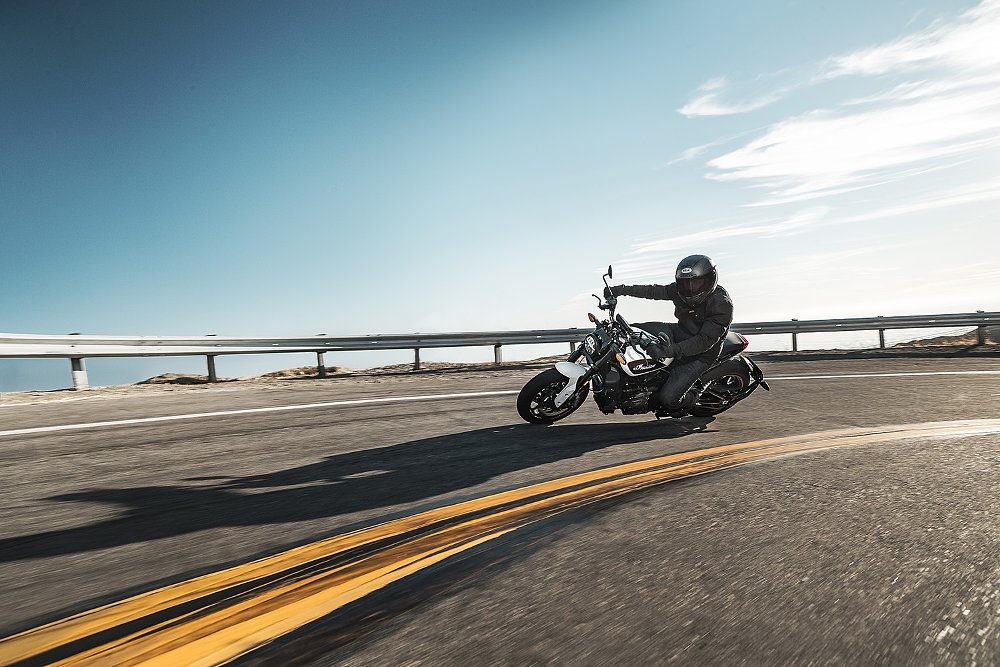
Indian FTR, FTR S and FTR R Carbon
The 2022 FTR models get some shared improvements in the engine bay. Indian says the 1,203 cc liquid-cooled V-twin has been retuned to improve cold starting performance and better throttle response. When Spurgeon reviewed the 2019 Indian FTR 1200 S, one of his few complaints was the throttle response, but that was a pre-production model. Indian sent us a revised bike and Spurgeon found it to be significantly better. I only rode the revised test bike, and while I wouldn't describe the throttle response as perfect, it was nothing I'd consider a deal-breaker. So if Indian has made further improvements for the 2022 model, that issue will likely be history.
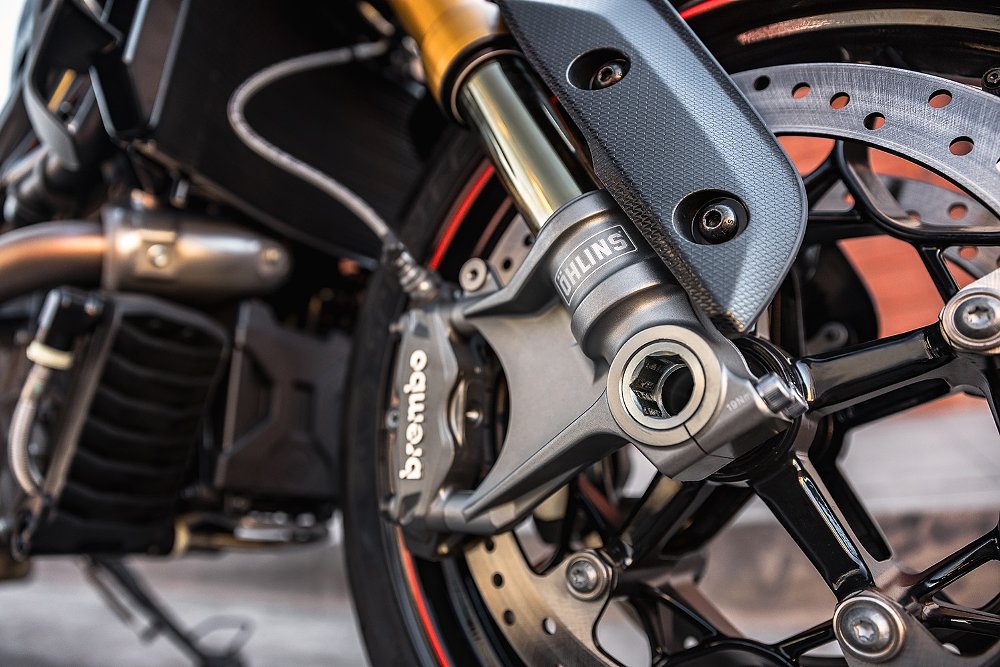
All three new versions, including the base model, now have suspension that's fully adjustable both front and rear. Suspension travel at both ends is reduced from 150 mm to 120 mm. Combined with the 17-inch cast aluminum wheels, that reduces seat height by 1.4 inches. Those wheels, by the way, wear Metzeler Sportec tires in common sport sizes of 180 rear and 120 front, giving owners lots of choices. The ProTaper handlebar on the new models is two inches lower and 1.5 inches narrower.
Interestingly, Indian rates all four 2022 FTR models at 120 horsepower and 87 foot-pounds of torque, which is three horsepower less than they claimed for the previous model but the same peak torque.
The FTRs also get rear cylinder deactivation at idle to reduce the amount of heat roasting the rider's thigh while stopped in city traffic.

Beyond that, here are the differences between the three new FTR models.
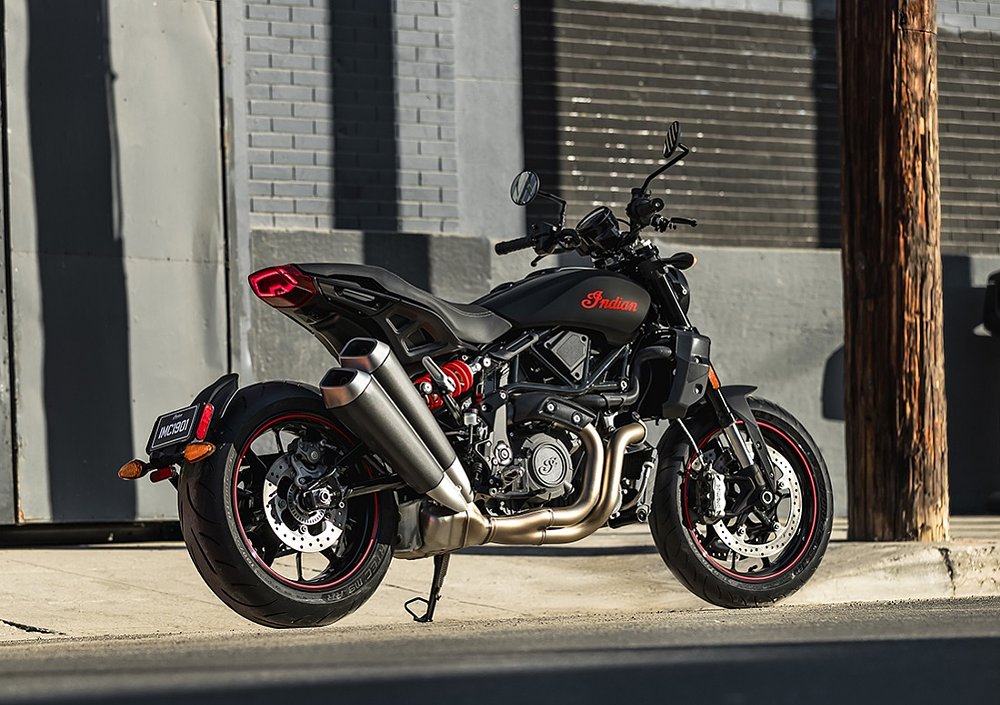
Starting price on the base FTR is $12,999 and it comes in Black Smoke color with red touches from the Indian script on the tank to the pinstripes on the wheels and the rear shock spring. The most visible difference is the analog gauge. Functionally, while it still has ABS and cruise control, it lacks any other electronic rider aids.
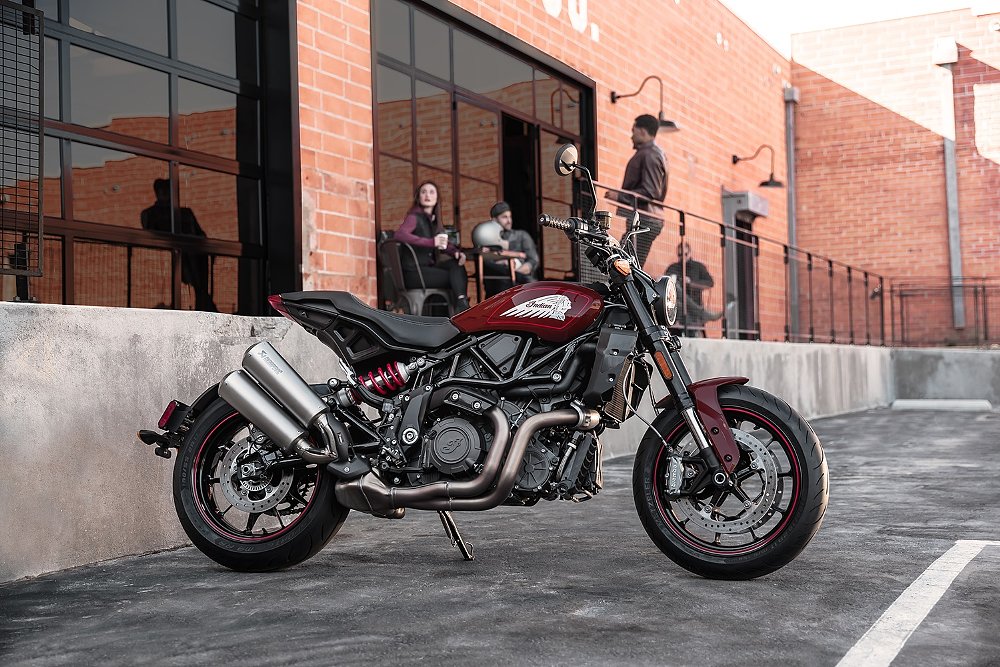
Stepping up to the FTR S gets the configurable 4.3-inch touchscreen display with phone integration via either Bluetooth or USB. The S offers three ride modes, wheelie control, stability control, traction control and cornering ABS. It comes with an Akrapovič exhaust, both Maroon Metallic and White Smoke paint options and starts at $14,999.
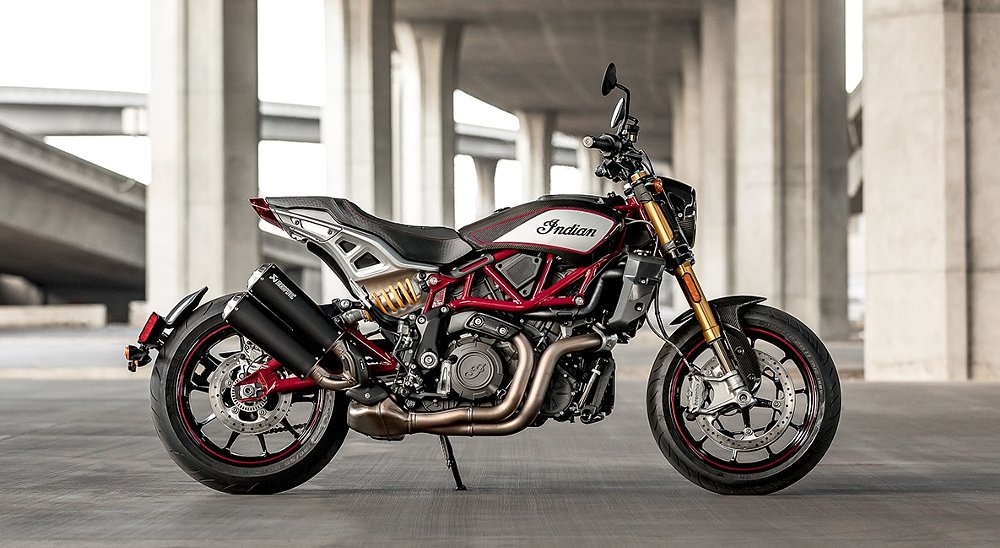
At the top of the line is the FTR R Carbon, which comes with all the features of the S plus carbon fiber parts, such as the tank cover, front fender and headlight nacelle. The Carbon gets Öhlins suspension front and rear, an upgraded Akrapovič exhaust and numbered badging. The price starts at $16,999.
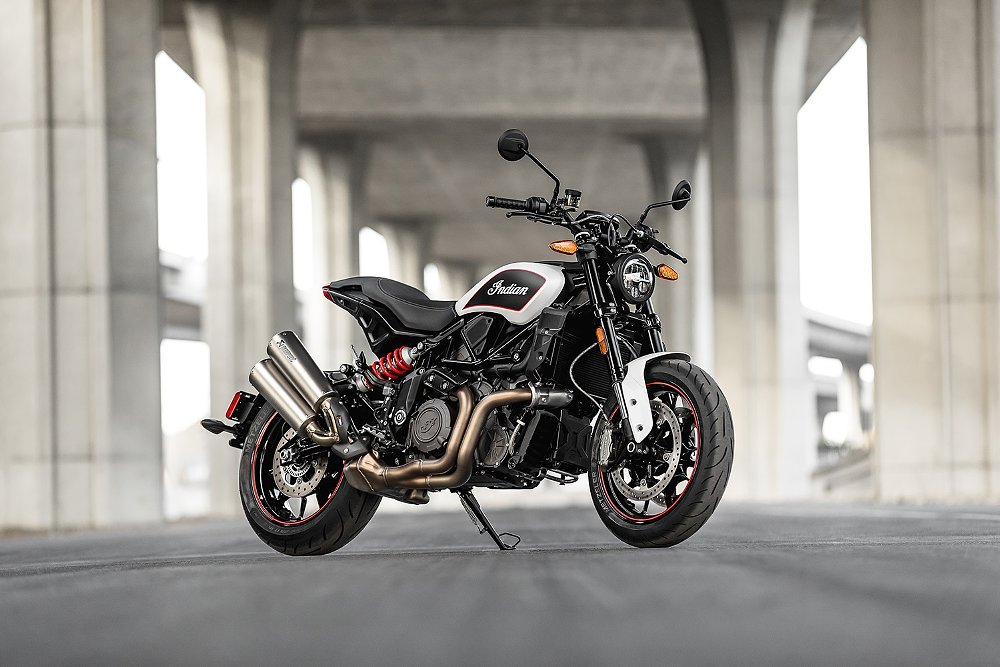
Indian FTR Rally
For those who want to stick closer to the original flat-track style of the FTR line, or want to spend more time off pavement, the FTR Rally continues in the lineup with the same larger, wire-spoked wheels with Pirelli Scorpion Rally STR tires. The Rally comes with an analog gauge, Titanium Smoke paint and the price starts at $13,999. It gets the same changes to the engine that are found in the new FTR models, and like the base FTR, it comes with ABS and cruise control but no other electronic rider aids.
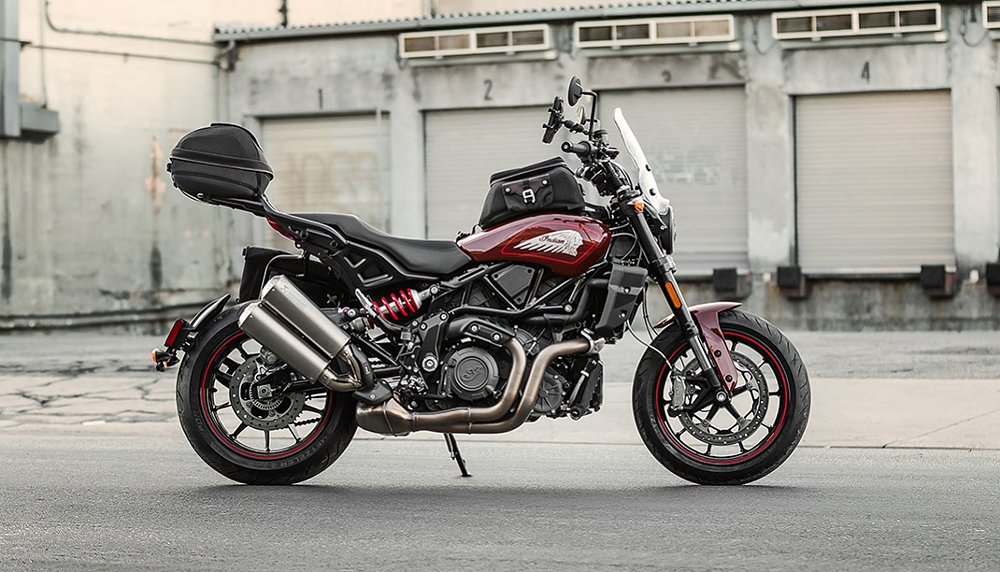
In addition to offering four models of the FTR, Indian has a wide range of accessories available, from some of the carbon fiber pieces found on the Carbon model to different seats and a rear rack and luggage. For example, if you're one of those Common Tread readers who wants all the performance without all the electronic rider aids, you can buy the base model and add the Öhlins suspension from the Carbon as an accessory. So even if none of the four models fits your idea of perfection, mixing and matching parts should be fairly simple. The FTR is versatile enough to be pressed into a variety of duties, though one thing that didn't change for the 2022 models was the 3.4-gallon fuel tank, which is limiting for longer rides. The FTR also wants 91 octane.

The FTR has evolved fairly rapidly over the last five years from the flat-track-styled concept bike at the EICMA show in 2017 to the more street-oriented models dominating the lineup for 2022. I find it interesting that not once in the news release about the new FTRs does Indian mention flat-track racing or its FTR750 race bike, despite sharing the FTR name and despite the 750's world-conquering performance. Indian refers to the FTR Rally's "scrambler aesthetic," not any flat-track heritage. Gone are the Dunlop DT3-R tires found on previous FTRs that featured a tread pattern styled to look like something that just rolled off the Springfield Mile. In their place are the Pirelli Scorpion Rally STR tires on the Rally and the Metzeler Sportec M3 tires, clearly chosen based on performance. Function over form. Imagine that.
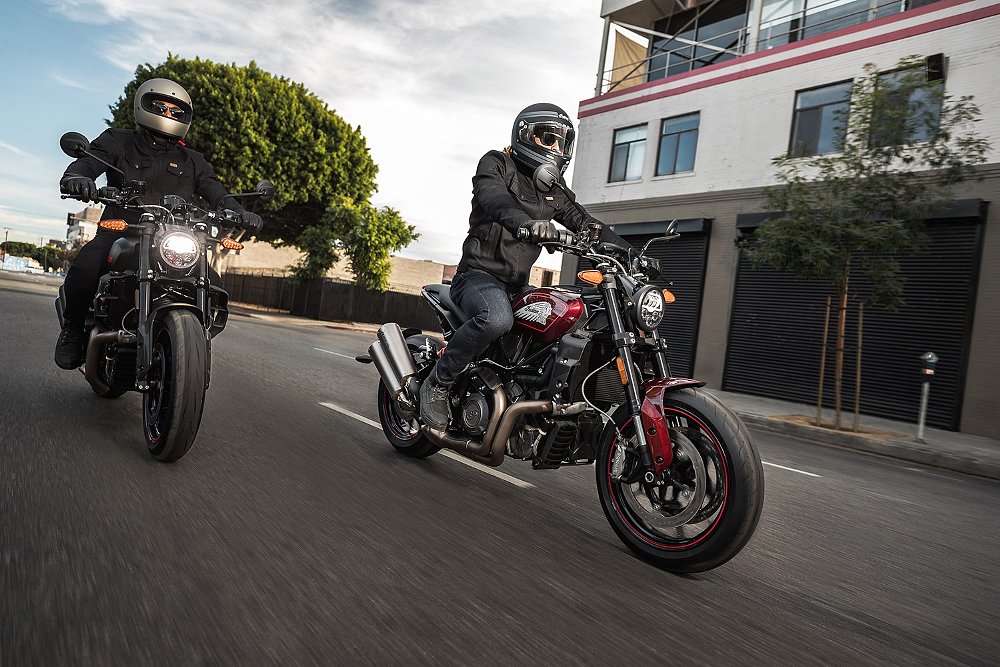
My theory is that flat-track racing (and that style of motorcycle) is avidly followed by a few, who made a lot of noise when Indian teased an FTR 1200 several years ago, but the sport's appeal is not wide enough these days to sell big numbers of bikes to the masses, especially one at the FTR 1200's price point. That would explain why Indian isn't even trying to capitalize on what is easily the single most successful race bike in any professional motorcycle racing series in the United States now.
On the other hand, losing some of the original flat-track style will likely make the FTR a better bike for the majority of us who ride on the street.
| 2022 Indian FTR Rally | 2022 Indian FTR, FTR S, FTR R Carbon | |
|---|---|---|
| Price (MSRP) | $13,999 U.S., $16,999 Canada |
FTR: $12,999 U.S., $15,999 Canada FTR S: $14,999 U.S., $17,999 Canada FTR R Carbon: $16,999 U.S., $19,999 Canada |
| Engine | 1,203 cc, liquid-cooled, eight-valve, 60-degree V-twin | |
|
Transmission, final drive |
Six-speed, chain | |
| Claimed horsepower | 120 @ 7,750 rpm | |
| Claimed torque | 87 foot-pounds @ 6,000 rpm | |
| Frame | Steel trellis | |
| Front suspension | 43 mm inverted fork; 5.9 inches of travel |
FTR and FTR S: Sachs 43 mm inverted fork, fully adjustable; 4.7 inches of travel FTR R Carbon: Öhlins 43 mm inverted fork, fully adjustable; 4.7 inches of travel |
| Rear suspension | Monoshock; 5.9 inches of travel |
FTR and FTR S: Sachs fully adjustable shock; 4.7 inches of travel FTR R Carbon: Öhlins fully adjustable shock; 4.7 inches of travel |
| Front brake | Dual Brembo four-piston calipers, 320 mm discs, ABS | |
| Rear brake | Brembo two-piston caliper, 260 mm disc, ABS | |
| Rake, trail | 26.3 degrees, 5.1 inches | 25.3 degrees, 3.9 inches |
| Wheelbase | 60.0 inches | |
| Seat height | 33.1 inches (unladen) | 32.2 inches (unladen) |
| Fuel capacity | 3.4 gallons | |
| Tires | Pirelli Scorpion Rally STR, 120/70/R19 front, 150/70/R18 rear | Metzeler Sportec 120/70/R17 front, 180/55/R17 rear |
| Claimed dry weight | 497 pounds |
FTR and FTR S: 482 pounds FTR R Carbon: 479 pounds |
| Available | Spring 2021 | |
| Warranty | 24 months | |
| More info | IndianMotorcycle.com | |

 Membership
Membership



